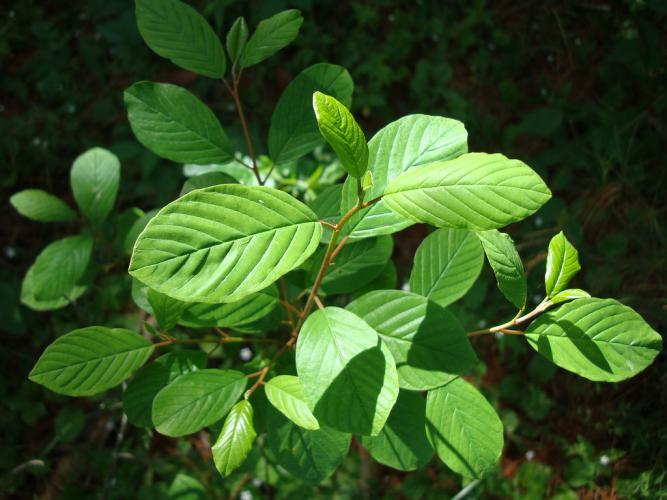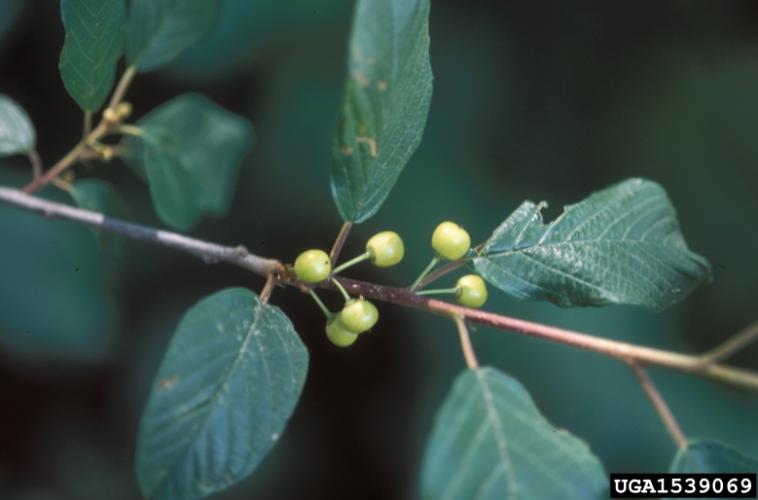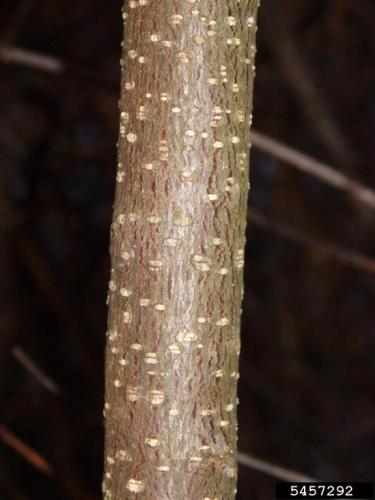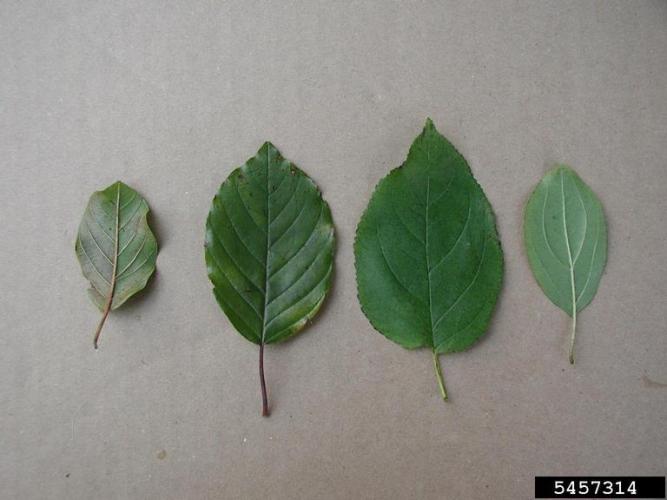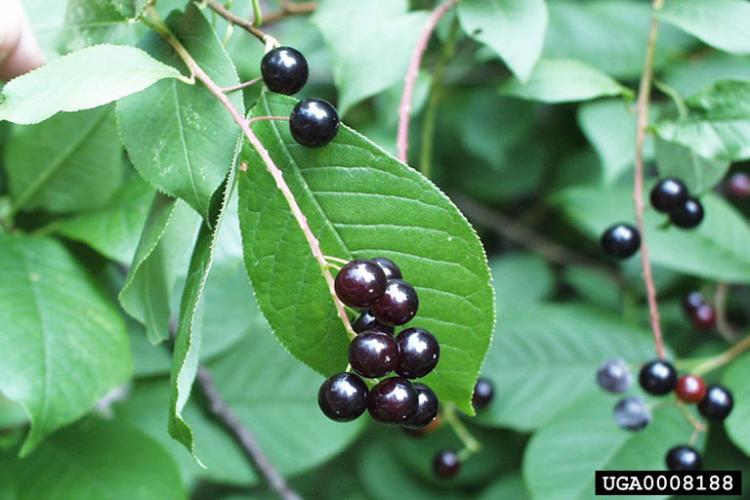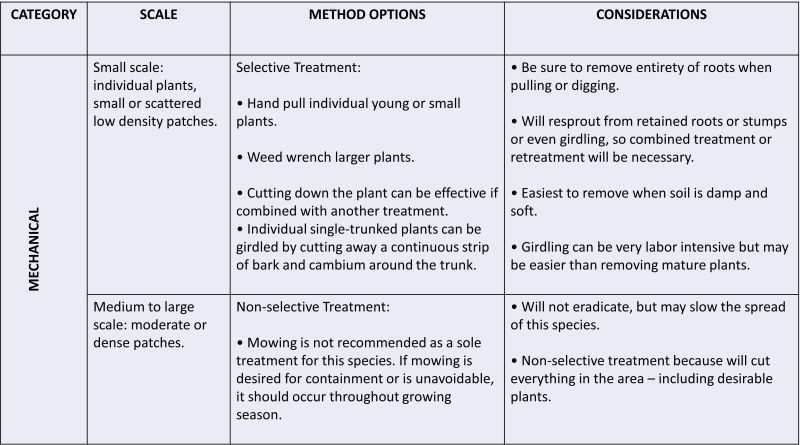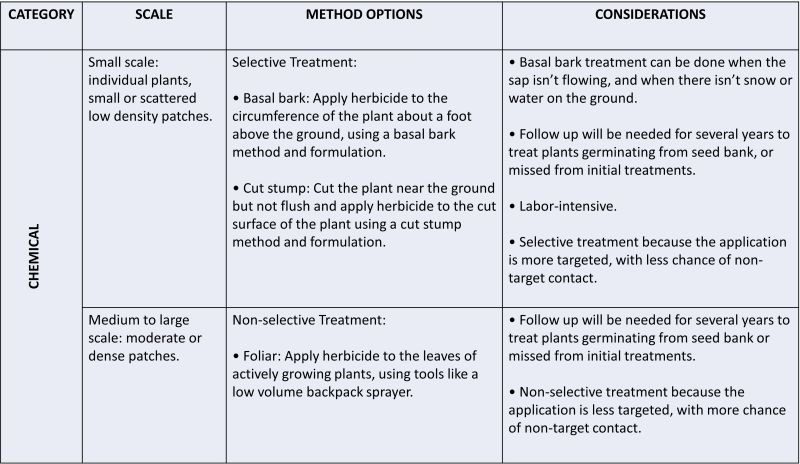Buckthorn, Glossy
Identification
Appearance
Large shrub or small tree that can grow to heights of 30 feet. Its bark is gray to brown with white lenticels.
Foliage
Dark green leaves are shiny, alternate (sometime opposite) and simple with prominent venation.
Flowers
Flowers are inconspicuous, pale greenish-yellow to yellow in color and occur in clusters in the leaf axis. Flowering occurs from May through September.
Fruit
Fleshy fruit ripens from red to a dark purple or black color. You can see ripe fruit beginning about July through September.
Check out this video by CT River Invasives on how to identify buckthorn.
Biology
Ecological Threat:
Glossy buckthorn is particularly aggressive in wet areas, rapidly producing a dense shade that eliminates native plants. It also engages in species-specific allelopathy, changing the structure of native plant communities.
Origin
Glossy buckthorn was first introduced into the United States in the mid 1800s as an ornamental. It has been used for hedges and wildlife habitat. A variety of cultivars are still sold in some nurseries
Habitat
forests, forest edges, fields, meadows, wet areas, disturbed areas
Life Cycle
Glossy buckthorn spreads by seed, recruiting birds that eat its prolific berries. Seeds may also be spread by water since fresh fruit can float for over two weeks. Dispersal may be significant in areas that receive frequent and extensive fall and winter flooding.
Vermont Distribution
How You Can Help
NATIVE/NON-INVASIVE ALTERNATIVES
Alternate-leaved dogwood (Swida alternifolia), Northern spicebush (Lindera benzoin)
Native Perennials and Shrubs for Vermont Gardens
Alternatives to Common Invasive Plants and Characteristics of Select Alternatives
Citations
Photo Credits
Glossy buckthorn bark- 5457292, Leslie J. Mehrhoff, University of Connecticut
Glossy buckthorn leaves – 5457314, Leslie J. Mehrhoff, University of Connecticut
Glossy buckthorn leaves in alternate arrangement- 1539069, James H. Miller, USDA Forest Service
Information Credits
Invasive.org- Glossy buckthorn
Video: CT River Invasives- Glossy Buckthorn Identification
Pennsylvania DCNR - Glossy buckthorn
Minnesota Department of Agriculture Summary of Glossy Buckthorn
Michigan Department of Natural Resources Best Control Practices for Glossy Buckthorn
US Forest Service Fire Effects Information System Report on Glossy Buckthorn
